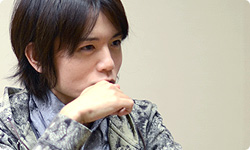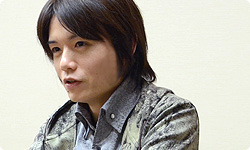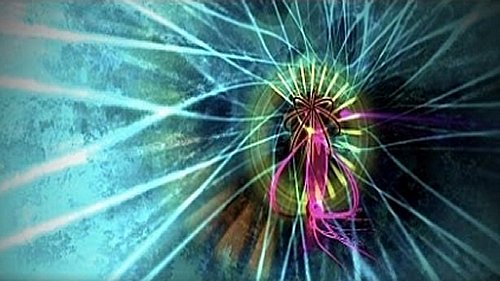Abstract on Abstraction pt.3
 Tuesday, May 15, 2012 at 9:39AM
Tuesday, May 15, 2012 at 9:39AM So far I've cautioned us against making abstractions on abstractions. The reason is unless we have a deep working knowledge of all the parts involved, making abstractions of abstractions are difficult to pull off; difficult, but not impossible. In many cases, because abstraction is an inherently reductive process, continual abstraction limits the complexities in the work and therefore limits the complexity of potential meaning or function the work can have. So aside from being highly knowledgeable, to design well and abstract what is already abstract, one may consider adding complexity back into the systems. This article will investigate this idea in detail.
One Method. Subtraction and Addition
"To translate, one must have a style of his own, for otherwise the translation will have no rhythm or nuance, which come from the process of artistically thinking through and molding the sentences; they cannot be reconstituted by piecemeal imitation. The problem of translation is to retreat to a simpler tenor of one's own style and creatively adjust this to one's author" Paul Goodman (1911–1972), U.S. author, poet, critic.
Though the above quote talks about translating literary works from one language to another, the message applies to our examination of abstraction in game design very directly. Call it rhythm, nuance, soul, or whatever you like; there is obviously something about the process of properly making an abstraction (simplified representation) of an abstraction that cannot be achieved mechanically through part by part imitation. At least, this is the case with complex art that conveys complex ideas.
We know that ideas of a certain level of complexity require those complexities to be expressed. Another way of saying this is that with too few complexities, with too few bits, when zoomed in too close to the subject, one cannot derive the higher level, complex meaning. This fact supports the idea expressed in the above quote. By metaphorically sticking one's nose to the subject and converting the smaller complexities one by one, you're bound to miss the higher level ideas that influenced the design of the lower level complexities in the original work. Put even more simply, if you're zoomed in too close, you're bound to miss the bigger picture.
The quote also expresses how unusual the process of abstracting abstraction is. Abstractions are already a odd, incomplete picture. What I mean by this is that an abstraction represents something else, though not entirely. The differences, large or small, between the original and the copy are matters of the artist's creative choices. So when we seek to translate or abstract from another's creative result, we step into a odd complex situation; not complex in the sense of being confusing or having many bits, but complex in the sense that certain bits are missing in a very consistent, and intentional way. It's like coming home and every other object in your house is rotated 30 degrees. It's not that you're unfamiliar with your home, but the slight change made to some of the objects is a sign of something intentional and deliberate.
When Paul Goodman says "to retreat to a simpler tenor of one's own style and creatively adjust this to one's author" he means to properly translate we have to simplify our own style, our own expectations, and our own tendencies before we can make the appropriate creative adjustments to the source material. Does Goodman's description remind you of the process of enduring the squeeze, the book, and the novelty? It should. As I've theorized, this process is an inherent part of learning complex systems in pursuit of a goal. By reducing yourself first, you avoid the problem of trying to fit the subject into your preconceived expectations. You prevent yourself from falling for the fallacy of reverse engineering the abstractions because you take the first step to quiet yourself and listen. And it's after listening to source abstraction that one is in the best position to make the kind of creative choices that I described at the end of the part 2. For deciding what to abstract, how much, and why are certainly creative and artistic choices.
When my English professors first told me that translators of creative writing were more talented than the original writers, I didn't believe them. Now, I've reversed my position. After thinking about translation over the years, studying various works, and writing this blog up to this point I completely understand why translation is so difficult. Abstracting off of abstractions is not just difficult for game designers. Being able to carry over programming code or other gaming assets doesn't help the problem. As long as you're making art, as long as there are abstractions and creative decisions in the source material, abstracting off of abstractions will always be more difficult.
Iwata Asks. Sakurai Tells
The following are excerpts taken from the Iwata Asks interviews with Masahiro Sakurai, the creator of Super Smash Brothers, the character Kirby, Kid Icarus Uprising, the updated version of Pit, and many other games I'm quite a fan of. Sakurai is one of my favorite game designers and is known as a genius among his fellow and former co-workers. He's also very good at explaining his process.
In the following excepts, Sakurai talks about his style and approach to game design. Notice how his method lines up with everything we've covered about abstractions, abstractions of abstractions, and core ideas.

It isn't twists and changes so much as disassembly and reassembly.Disassembly and reassembly? In other words, you break down the elements of conventional games and then reconstruct them your own way.That's right. For example, there are all kinds of game genres, like fighting games and puzzle games, and each one has its own "fun core." First, I try taking away everything unnecessary around that core.That's disassembly.Yes. Then, it's like I place the fun core somewhere else and build around it again.

I've told you about how we originally made Super Smash Bros. as an antithesis to 2D fighting games, haven't I?Fighting games had developed in a way that the person who can pull off combos the best gets stronger and stronger.But I do like the organic, ad lib nature that happens distinctively in fighting games, rather than learning specific ways to get stronger... so instead of asking players to pull off specific combos that require instant elaborate manipulation, I wondered how I could bring out an element of ad lib.
Percentage health, dynamic knock back, dynamic hit stun, and directional influence are all features that stem from Sakurai's desire to give the fighting combat of Smash Brothers a greater focus of "ad lib." After Sakruai identified the core of the fight game experience and shifted its focus, he then had to add many different design elements to strengthen the new design. He had a similar approach when he created Meteos and Kirby Air Ride.
When you made Kirby Air Ride, what kind of disassembly and assembly took place?First I thought about our general notions of the acceleration and drifting.Because it's a racing game.Right. And like why drifting feels good.What conclusion did you reach?We decided that drifting feels so good because there's risk involved. Under normal grip conditions, the tires don't slide and the vehicle is stable, so you drive with little risk. Now if you drift while you may lose control and there's a greater danger of going off-course and get it done, that feels awesome.It feels better when you run risk. There's a return of being able to drive faster.Right. Before anything, drifting lies at the root of the concept of Kirby Air Ride.The design of the controls for Kirby Air Ride was unique in the way there was no accelerator button.The A Button isn't the accelerator, but the brakes. It's unique, so it was also hard to understand. (laughs)Racing games had always been composed of an accelerator, brakes and the steering wheel, but you changed that.But it wasn't like we set out to overturn the accelerator-brakes structure. This way of thinking might be like (Shigeru) Miyamoto-san's. He plays a game and designates the buttons based on what feels right.And if you pushed on a curve, you could drift, which felt great.Yeah. The controls are the exact opposite of a conventional racing game. We did that because it suited the feeling of plunging ahead. But that may not have gotten across to the players from the beginning.
Kirby Air Ride is a unique racing game for all the reasons Sakurai described. The interesting part about its creation is that the unique design decisions were the result of supporting the core gameplay when it was reduced to its more simple form. I like how Sakurai acknowledge his method of disassembly and reassembly while also pointing out that Miyamoto is the kind of designer that does the opposite. I want to stress again that there's no wrong way to design a video game. Whether you start with the high level ideas, story elements, gameplay, mechanics modes, features, the core fun, or with an abstraction of another game, you can end up with an innovative, unique, and quality final product. The point I want to drive home is that the way you go about designing a game can expose you to design challenges that other methods may naturally avoid. Abstracting off of abstraction from the start may be the hardest way to go.
To close I want to highlight a game that's similar to Kirby Air Ride in that it's an abstract racing game.
DYAD

"Dyad is a warpspeed abstract racing game" ~Shawn McGrawth
Dyad is created by Shawn McGrath, a friend of mine and a fan of Critical-Gaming. You may recall that I mentioned Shawn in my GDC 2012 Reflection article. To close this article I wanted to quote a few more statements from Shawn that resonate with everything we've discussed.
"Rather than having the traditional mechanics of break and accelerate, you must navigate an infinite tube by interacting with enemies for speed. This creates an interesting dynamic where your only obstacles are also your only source of speed [risk reward]."
Shawns description sounds like he went through a similar process Sakurai went through to reduce his expectations, find the core, and build up the racing gameplay around a shifted core. Both Kirby Air Ride and Dyad are abstractions of the racing genres in that they create a lot of the same experiences and gameplay challenges of racing games, but they go about reaching these goals in unique ways. By cutting out the unnecessary features these designers were able to get to the creative core of what they liked most about racing gameplay. In Shawn's case, he was able to take his core racing gamelay and run with it shaping Dyad into a game that is "a cognitive experiment presented through gameplay [that] will take you to a new world with unique physical rules, and take your mind to a new level of consciousness." In other words, Shawn clearly added a lot of his own style to shape Dyad into a game unlike any other that I've played. Expect more on Dyad in the near future.
I had originally planned a part 4 of this series, but I believe everything has been said. I will write about this topic as I write more specifically about individual games.

